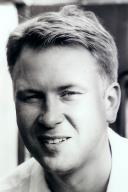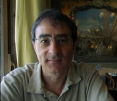
|
The
UK Chapter of the Eurographics Association
(EGUK) presents:-
|
|
|
Theory
and Practice of Computer Graphics 2005
|
|
|
University of Kent, Canterbury, UK |
15th
to 17th June 2005 |
Conference
KEYNOTES |
> | Vincent Gaffney |
| > | Peter Lindstrom | |
| > | Mel Slater | |
|
|
||
|
Vincent Gaffney. |
||
|
Abstract.
The
HP Visual and Spatial Technology Centre (HP VISTA) at the University
of Birmingham (UK) was established in March 2003. The Centre is
equipped to international standards in order to undertake large
scale remote sensing and visualisation projects with special emphasis
on remote sensing and high definition survey. This paper will introduce
the archaeological computing division of HP VISTA and describe some
of the projects undertaken during the first years of the Centre's
operation. These include high definition survey projects undertaken
in Britain (including industrial sites at Ironbridge in Shropshire
and on Catholme ritual complex in Staffordshire) and Italy (on the
Roman municipium of Forum Novum in the Sabina) as well as the Centre's
flagship project aimed at mapping the inundated Mesolithic land
surfaces of the southern North Sea. |
Biography Professor Vincent Gaffney is Chair in Landscape Archaeology and Geomatics in the Institute for Archaeology and Antiquity at the University of Birmingham. His current research interests include Balkan later prehistory and GIS-based applications in archaeology. He is Co-Director of the Adriatic Islands Project and has carried out a number of excavation and survey campaigns in the region. More recently, he has begun a research project investigating the wetland landscape of the river Cetina in collaboration with the Museum of Croatian Archaeological Monuments. Other European fieldwork, with Dr Helen Patterson (British School in Rome) and Dr Paul Roberts (British Museum), has been centred on the Roman town at Forum Novum, Sabina. In Britain, he was part of a research team using web-based GIS' and virtual representation to explore the landscape of Stonehenge (recently published as "Stonehenge Landscapes: Journeys through Real and imagined Landscapes"). Further projects related to British prehistory include mapping the inundated landscapes of the southern North Sea in collaboration with Dr Ken Thomson (GEES)
|
|
|
|
||
| Abstract.
High-resolution 3D scanners and teraflop supercomputers
have led to an explosion in the size and availability of acquired
and synthetic geometric data sets. Today's meshes are measured in
millions or even billions of elements, and greatly exceed the visualization
capabilities of common desktops. While processor speed and storage
size have by and large kept pace with this rapid data growth, bandwidth
and latency of CPU/GPU memory and disk are quickly falling behind.
As a result, it is becoming increasingly clear that we can no longer
afford to ignore the importance of coherent data layout and access
in graphics, or advances in algorithms and processor speed are doomed
to yield diminishing returns.
We are investigating techniques for organizing and accessing geometric data in a more coherent and cache-friendly manner. Drawing upon well-known concepts in computer science, we are looking to extend techniques such as "windowed streaming" and "cache-oblivious" data structures and algorithms to the domain of unstructured meshes, with applications in offline digital geometry processing, interactive visualization, and GPU-based techniques. |

Biography Dr. Peter Lindstrom is a Computer Scientist at the Center for Applied Scientific Computing at Lawrence Livermore National Laboratory. His current research interests are in scientific visualization and computer graphics, with a focus on mesh simplification and compression, multiresolution modeling, geometry processing, and large-data visualization. He is the principal investigator of a research project on cache-coherent organization and processing of massive unstructured geometric data. This project aims to address the bandwidth bottleneck in visualization and analysis of petabyte-sized data sets produced in numerical simulations by scientists at LLNL. |
|
|
|
||
|
Mel Slater and Pankaj
Khanna. A Virtual Light Field for Global Illumination |
||
|
Abstract |
Biography
Proffessor Mel Slater has been at UCL since November
1995. His major research interest is virtual light field rendering:
a paradigm in computer graphics that results in real-time walkthrough
for globally illuminated scenes, and supported in this by a Senior
Research Fellowship from the EPSRC. His other major interest is
in helping to find out what makes virtual reality work for people
- in the sense that they can engage with one another in virtual
environments, and also interact with virtual characters. This research,
the study of 'presence' in virtual environments, is also explored
in the context of psychotherapy for social phobia and other related
applications. |
|


